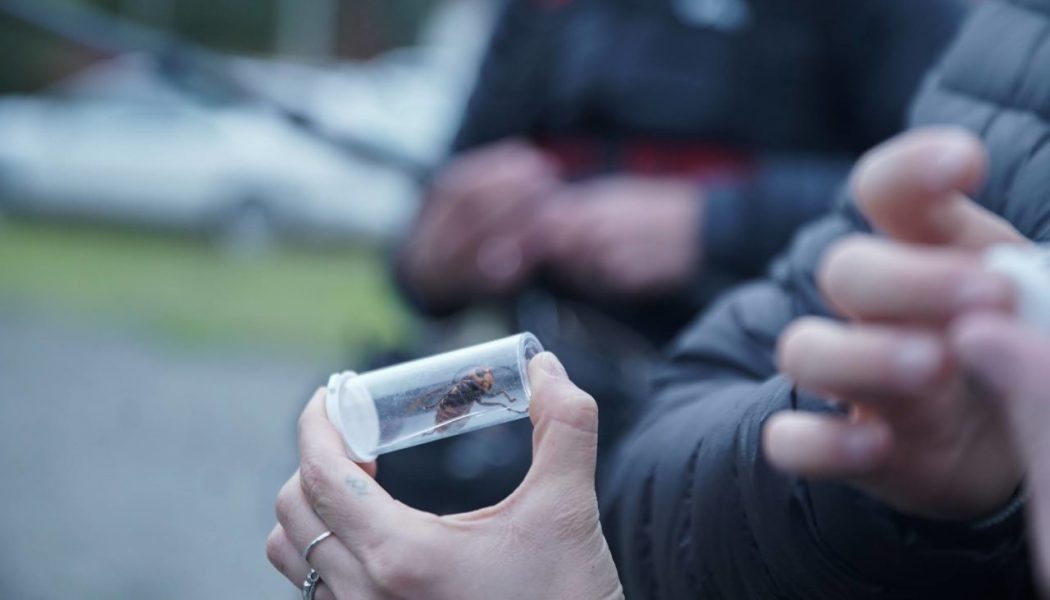It’s hard to overstate just how big the problem of the unexpected second villain of our global annus horribilis – the “murder hornet” – could be.
Its body is the size of a bloated cheese-puff, its wingspan as wide as your palm. These rusty-orange-colored insects aren’t just the largest hornets in the world, they are apex predator wasps that made their presence known in late 2019 in Washington State after decimating (by decapitating) a defenseless colony of beekeeper Ted McFall’s western honeybees – 60,000 of them.
Known formally as the Asian Giant Hornet, these big bugs – which rose to internet fame last May after a report in The New York Times – boast sharp mandibles, quarter-inch stingers and the ability to squirt out their toxic venom while flying by. Get stung by a dozen of these suckers and you could end up in a life-threatening situation. A little bit of venom in the eye could lead to blindness. The Times also reported these murder hornets killed 42 people in a single province in China in 2013 and upwards of 50 people a year in Japan.
While humans aren’t targets, the western honeybees are on the murder hornets’ food chain and the bees lack any sort of special skills to defend themselves against the insect invaders. If you understand the importance of bees to agriculture through pollination, or, if you just like eating normal-looking tasty food, then the introduction of these murder hornets to the United States is worth taking very seriously.
Up in The Evergreen State, there is a small, loosely connected collective of beekeepers, concerned citizens and a handful of Department of Agriculture employees who are on the frontlines of the scary situation. Their story of developing – in real time – ways to find and exterminate these non-native insect predators is the battle documented by filmmaker Michael Paul Stephenson in the new discovery+ documentary feature, Attack of the Murder Hornets.
“There is a very real issue here and that issue is that there is an invasive species that has been introduced to this new ecology and landscape, and the impact that it can have on honeybees could be devastating,” Stephenson told SPIN. “The plight of our honeybee – it’s an uphill battle. That insect is facing so many things that are continually threatening [it], so one more threat against our honeybee is a big deal.”
Stephenson’s film follows Department of Agriculture entomologist Chris Looney as he pulls in support from beekeepers McFall, Ruthie Danielsen and various locals to set up makeshift traps and report sightings of the massive murder hornets. When a homeowner spots a couple of hornets flying near his property, it becomes a high stakes chase for Looney to capture one, carefully fit it with a GPS device (developed by a local college student), and track it back to its nest to exterminate the massive hive before new queens can go off and create additional colonies.
With these insects still a fairly new problem, figuring out how to find them and eradicate them from North America remains a work in progress.
“The reality is, no one’s sure what the best plan is,” McFall said. “The Department of Agriculture guys are trying to figure things out, us beekeepers are trying to figure things out, but in the words of General Patton, his little slogan was, ‘A good plan today is better than a perfect plan tomorrow.’ So, we’re just trying to be very aggressive with this thing and trying to deal with it right now before it’s too late.”
And for the dedicated amateur murder hornet hunters, when winter ends, there will be more work to do.
“This spring, they’re going to be doing the same thing and it’s yet to be seen how many existing nests could have survived over winter and will emerge in the spring with new colonies,” Stephenson said. “And these [beekeepers] will be back out on the frontlines setting traps trying to fight this thing.
“There’s a window right now, because the odds of trying to stop a new species are slim and it’s all about timing. Once you lose that window of trying to stop or prevent it, there’s no turning back. It’s going to be interesting to see what happens the next couple of years.”
Attack of the Murder Hornets is available to stream now on discovery+











